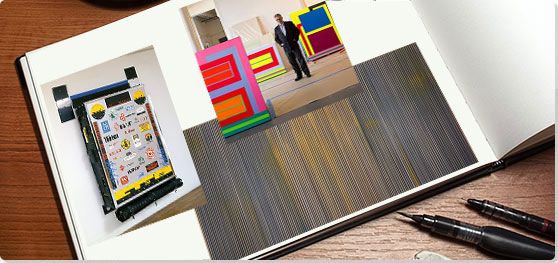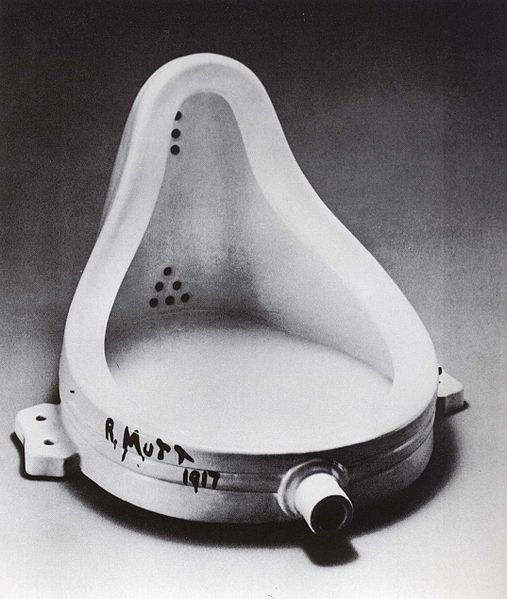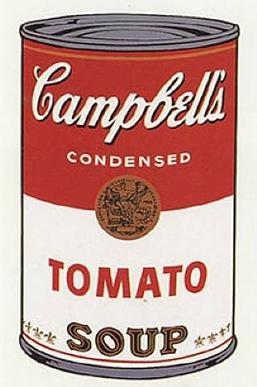Summary of Neo-Geo
Neo-Geo was for a time the "next big thing" in the art world of the late 1980s, a loose group of artists seemingly engaged in a critique of consumerism, commercialization, and the regulation of space through abstract aesthetics. Drawing on lessons learned from earlier forms of modernist artistic practice and influenced by European philosophy, artists deployed abstract forms to critique late 20th century Western civilization. Their work commented on increased levels of social isolation within society, the veneration of consumer goods, and the simulation of experience at the expense of the real. Perhaps ironically though, many of the artists went on to be hugely successful commodities in the art market, leading some critics to suggest that the movement was driven more by marketing and publicity hype than genuine social consciousness.
The movement's name derives from Neo-Geometric Conceptualism, but both critics and artists struggled to agree on a name for the group. "Post-Conceptualism", "Simulationism" and "Post-Abstract Abstraction" were alternatives used by various curators, artists, and writers, but all speak to the idea of an art movement devoted to the repurposing of already existing aesthetic languages to engage (mostly implicitly) with contemporary concerns about consumer culture and wider society.
Key Ideas & Accomplishments
- Neo-Geo combines the aesthetics of earlier abstract art forms like Pop Art, Op Art and Minimalism with concepts derived from continental philosophy. Most notably this included the work of Jean Baudrillard, whose idea that desires are constructed rather than natural was particularly influential in relation to the critique of consumer culture.
- Artists also drew heavily on Baudrillard's concept of the simulacrum, or the copy of a copy. Referring to the sense that reproductions rule the everyday, from brand logos to mass-produced items, Neo-Geo artists played with notions of authenticity in relation to it by, for example, presenting mass-produced objects as one-of-a-kind art objects. Rather than doing so to shock or trouble the notion of what art is, this was intended to simply reflect the reality already around the audience.
- This distinguishes Neo-Geo from previous artistic movements. After Dada and Pop, the reproduction of these objects was simply exemplary of their ubiquity, as it was no longer shocking to bourgeois sensibilities to use readymades in artistic practice. In an almost cynical manner, it suggested that both the art world and the real world were now predicated on the reproduction of the same objects, only able to be recombined to create new meaning.
- Unlike much of the more formally distinct work from the East Village scene of the 1980s (which many Neo-Geo artists had early ties to) these paintings and objects were able to be taken up as commodities by the art market with relative ease and several artists achieved rapid fame. This led to accusations from some critics that the subversive quality of critique implicit in their work had been lost. Several suggested that the masterful publicity campaign attached to the artists reflected an art world too ready to seize new work as the next major movement.
Artworks and Artists of Neo-Geo
Red Cell with Conduit
This bright red painting is divided into an upper section by a line of darker color, so thin as to be almost imperceptible, and a lower quarter, divided in half by a horizontal black line. Two black vertical lines, placed symmetrically and framing the center, rise from the horizontal line at 90-degree angles to end sharply at the thin line. Halley wrote, "This space is akin to the simulated space of the videogame, of the microchip, and of the office tower - a space that is not a specific reality but rather a model of the 'cellular space' on which 'cyberneticized social exchange' is based," while noting that it is "executed with a variety of techniques lifted from the Hard-Edge and Color-Field styles... For me, those styles, used as a reference to an idea about abstraction and an ideology of technical advance, replace reference to the real." Its construction demonstrates a clear influence from the color field painting of artists like Mark Rothko or Barnett Newman.
Innovatively the artist used Roll-a-Tex, a material used to texture walls, to create canvases with a tactile texture that as art historian Amy Brandt noted "both seduce and repel viewers with assaults on their senses of sight and touch," and Day-Glo paint, described by art critic Roberta Smith as "powerful fluorescent colors [that] comes from somewhere beyond art." In a move characteristic of Neo-Geo, the artist referenced the philosophy of Jean Baudrillard, by suggesting he aspired to "hyperrealization", saying that each "era becomes a hyperrealization of the preceding era, which in turn is assigned the value of reality." The painting, although simple and formally abstract, is almost painful to look at due to the fluorescent quality of the paint, suggesting a 'hyper' or overcharged version of already established aesthetic strictures.
Halley continues to influence contemporary artists, as art critic Stephen Maine wrote in 2010, "Peter Halley's... cell-and-conduit "sociograms" of the 1980s doused that era's Neo-Expressionism like a cold shower. Critiquing modernism's utopian underpinnings, Halley just said no to liberal humanism, and dutifully staked out the concomitant theoretical territory. Twenty-five years later, his dystopian hybrid of Minimalist landscape and Pop-culture color again commands attention."
Acrylic, Day-Glo acrylic, and Roll-a-Tex on canvas - The Museum of Modern Art, New York
The Arrangement of Things
This painting with a horizontal axis uses fine vertical lines of color, overlaid with small asymmetrically placed stains of vibrant colors that blur and interrupt the strict geometric lines. A contrast is created between the stains, which are soft, almost cloud-like pulses of color, and the defined verticals that might suggest landscape, atmosphere, and/or a shifting relationship between background and foreground. The result is an emphasis upon the referentiality, rather than the purity, of abstraction.
In the early 1980s Bleckner, drawing upon 1960's Op Art, focused on creating stripe paintings, while also fracturing the hard edges of that movement, emphasizing ambiguity in the relationship between the two goals. As he said at the time, "As you begin to see something clearly, it breaks up. I like to use them as taking the idea of an image to a place where everything gets fractured. The paintings have to do with different states of consciousness, trying to describe that place in our minds where we see and don't see simultaneously.'' In looking at the painting, the eye is confused by the Op Art distortion of closely placed lines, whilst also being aware of the more organic layer of abstraction. This might suggest the natural world beneath the geometric impositions of humans, or a sub-concious fighting against the barriers of society.
The influence of Bleckner's 'stripe paintings' as they have been dubbed by art collectors and critics, continues today. At an exhibition at the Institute of Contemporary Art in Boston that featured Bleckner's work, the director David Ross said, ''He's one of the most important painters in the emerging generation of American artists. The early stripe paintings really opened the area of geometric abstraction to a thorough reinterpretation by a new generation. A number of artists in this generation, whether they paint like Ross or not, show an incredible respect for Ross as an influence and a force."
Oil on canvas - Boston Museum of Fine Arts, Boston
Three Ball Total Equilibrium Tank (Two Dr J Silver Series, Spalding NBA Tip-Off)
This work shows three Spalding basketballs, suspended in a clear rectangular glass tank filled with water and resting on a black steel stand with pneumatic feet that also seems to float in space. The work composes the objects as if they were geometric shapes, reflecting the calm order of the 'golden ratio' in its proportion and number. Two quantities constituted the 'golden ratio' if the ratio between them was the same as the ratio between their sum and the larger of the two. The principle, known also as the 'golden proportion', was an important tenet of Classical art. As a result, here a consumer object is elevated to an ideal classical realm, the 'total equilibrium' of the ironic title, while undercutting that realm with the dash of humor created by the basketballs and aquarium. In another reference to Baudrillard, Halley notes that, "Koons' pieces have the same effect on the viewer that Baudrillard has described the space program as having on the public. Koons, like NASA, has created a universe 'purged of every threat to the senses, in a state of asepsis and weightlessness,' a universe in which we are "fascinated by the maximization of norms and by the mastery of probability".
Koons made this work as part of his series Equilibrium (1985) for his first exhibition at International With Monuments. He made the tanks in three sizes, each holding one, two, or three basketballs and differentiated by the brand of basketball, filling the tanks with distilled water into which a sodium chloride reagent had been mixed so that the balls would float. The series included his Total Equilibrium Tanks, which were completely filled like this one, and the 50/50 Tanks, half-filled so the basketballs bobbed above the waterline. Consulting scientists to find the right formula, the artist said, "I wanted to keep it a very womb-like situation with water. I like the purity of water. So I arrived at an equilibrium which is not permanent but very pure," as after about six months the basketballs sank and needed to be reset.
The pieces were accompanied by a lifeboat and an aqualung cast in bronze, along with Nike advertising posters that showed celebrity basketball players wearing Nike products and holding basketballs. As art critic Angelika Muthesius wrote, "the tanks were an ultimate state of being ... The Nike posters were the Sirens - the great deceivers, saying Go for it! I have achieved it. You can achieve it too! ...What was paralleling this message was that white middle-class kids have been using art the same way that other ethnic groups have been using basketball - for social mobility."
Glass, steel, pneumatic feet, 3 rubber basketballs and water - Collection of the Tate, United Kingdom
Broad Stripe: 6
Appropriating the analytic abstraction of Frank Stella, Robert Ryman, and others, this work consists of four broad vertical bands of blue and olive green, running from top to bottom of the pictorial plane, and implicitly extending beyond the frame. Though symmetrical, the band edges have some variance, wavering ambiguously, as if the human eye or the artist's hand had blurred them. The blue band on the far left is much thinner, creating a sense of horizontal extension, as if the image were cropped, and the small scale of the painting at 20 x 24 inches, also suggests a kind of diminishment of the monumental claims of abstraction as 'pure' form.
Discussing the artist, Halley references Baudrillard's simulacrum again in his "The Crisis in Geometry" (1984), where he wrote: "it is in Sherrie Levine's recent work that the simulacrum's fascination with nostalgia is the most specifically communicated... modernist geometry is emptied of all content except for nostalgia for modernist geometry." As art historian Hal Foster noted, her works "evoked this abstraction only to fall short of it, to fail it - which is to say, only to suggest that it had fallen short, that it had failed on its promise of pictorial purity, formal reflexivity, and so on." Like the simulacra, the familiarity of the image is the interesting thing about it, questioning what makes this particular abstraction different from Ryman or Stella's. The form is extremely similar, but the affect created is distinct, almost summing up the project of Neo-Geo artists.
Already known as part of the Pictures Generation with her works like After Walker Evans: 4 (1981), Levine became an important bridge between that movement and the Neo-Geo group with her check paintings and stripe paintings. Her distinctive stance, associated with both movements but not confined to either, was perhaps informed by gender, as Jerry Saltz noted in his review of her 2011 survey at the Whitney, "any woman approaching art history in the early eighties was attempting to enter an almost foreign country, a restricted and exclusionary domain that spoke a private language." In Saltz's view, her work, "shows how one artist from this generation cross-examined art history, reveled in it, and smashed it against the windshield of her anger...Her strategy was simple and not entirely novel...Levine tunneled into the storehouse of modern-art history, making obvious copies - bigger, smaller, in different materials - of work by Courbet, Mondrian, Brancusi, Léger, and many others," and also creating "her generic paintings of generic paintings - stripes and squares, subtle surfaces, come-on color." As Roberta Smith noted her "appropriational strategy...All along...has questioned the notion of originality, first by using motifs from other artists, then by representing motifs of a more anonymous sort. "
Casein paint and wax on mahogany - Whitney Museum of Art, New York
Untitled
This rectangular painting, oriented on a horizontal axis, has grey and black irregular vertical bands running from edge to edge that seem to be cut-out by an angular irregular shape that resembles a stylized graffiti signature or tag. Instead of presenting a unified surface however, it projects through perspective into a surface beyond the first layer of image, revealing a green and black grid beneath. As art critic William Wilson wrote, the artist's works speak the accent of Baroque graffiti with their [...] serpentine abstract shapes. But they don't spell anything or form letters. Instead, they are subdivided with geometric bands of color that...tend to create optical illusions." At the same time, small glowing dots of primary colors like puffs from a can of spray paint appear asymmetrically throughout the pictorial frame, echoed by dark, sharply edged small circles that seem one moment to be convex and, the next, concave or cut out. Spatial relationships shift on the edge of apprehension, compounded by the almost textile quality of the paint, as the concrete grey of the bands looks soft like felt. Meaning is suggested but elusive, as the artist said, "my paintings are about nothing. How they deal with the problem of nothing." Nevertheless, the qualities of the 'nothingness', the pure formal abstraction are highlighted by the painting's context - referencing East Village graffiti art, the realities of the urban environment at the time, and the daily life of the artist.
Schuyff had been born in the Netherlands, but his family moved when he was a boy to Vancouver, Canada. He later studied at the Vancouver School of Art and became influenced by the works of Andy Warhol and Willem de Kooning. In the 1980s he moved to the East Village in New York and became associated with the Neo-Geo group, though his work often eludes categories, a position fostered by the artist himself. His enigmatic narratives led to his sometimes being classified as Neo-Surrealistic, while his emphasis on painterly technique and convincing illusionary effects resulted in some critics classifying his work as Neo-Op. In 2005 he moved permanently to the Netherlands, where he continued exploring both painting and sculpture, while also developing a career as a musician with his group The Woodwards. In 2014 his work was featured at the Whitney Biennial.
Acrylic on canvas - Portland Art Museum, Portland, Oregon
ultra red #2
This shelf sculpture uses the artist's characteristic laminated plastic wedge-shaped units, employing triangles with angles of 40, 50, and 90 degrees on which the artist has arranged nine cooking pots, stacked atop one another, six digital alarm clocks, and four lava lamps. Color plays a unifying role, with the alarm clocks blinking with red readouts which echo the color of the pots. The lava lamps are also red and gold. At the same time as this unified color palette is created, a hierarchical order is conveyed by the rising 'step-like' effect of the shelf. The artist has compared his works to the structure of game boards, the placement of goods in stores, and musical scales, and has said his precise arrangements are "about how objects can talk to each other." Although meaning is elusive and the artist resists explaining the conceptual basis for this work, the stepped shelving could imply a hierarchy of need, with the objects referencing food, shelter and purpose, represented by the cooking pots, lava lamps (homeware/informal lighting) and alarm clocks (an object with an unavoidable connotation of capitalist regulation of time).
While his work questions the status of the art object, Steinbach's unique contribution is in exploring anthropological, psychological, and cultural paradigms. As art historian Cornelia Lauf noted, "Just as the lava lamps and clocks continuously mutate, so too ultra red #2 resists any fixed meaning. A fundamental issue it raises is one of language. The title...focuses attention on an element that is common to the objects and the shelves - they are all some shade of red...It is an anthropological perspective," with the result that the work "suggests that the artistic stacking of forms is as relative a construction as the development of different dialects."
Born in Israel, Steinbach moved as a teenager with his family in 1957 to New York, where he went on to study at the Pratt Institute. In 1965, the artist went to Paris for a year, which he described as a turning point: "There was a big window, and there was art - well, it didn't look like art, but there were these paintings, of a washing machine and other products. I was interested in Surrealism and the Cubists. An illustration of a washing machine? That's bullshit." And yet, as he looked at the work by Roy Lichtenstein and Andy Warhol, he described how his initial reaction of anger changed to being transfixed. "It presented the obvious and yet it wasn't obvious at all."
In the 1970s he turned to installation works like his Display #7 (1979), a work that involved found objects arranged on shelves on a wall he had covered with bands of different wallpapers. Around 1983 he began making his iconic shelves, arranged with various ordinary objects from mop buckets to 'I Love NY' coffee mugs and cereal boxes. As art critic, Andrew Busseth wrote, "At their best, his arrangements ooze feeling. They can look sinister or comforting, disorienting or familiar. His pieces may be the perfect symbols of a society rife with rampant consumerism. But they may also achieve more than simple critique, teasing uncanny qualities out of quotidian objects." His work has influenced many later artists, including Rachel Harrison, Darren Bader, Josephine Meckseper, Gareth James, Adam McEdwen, and Ricci Albenda.
Wood, plastic laminates, four lava lamps, nine enamel pots, and six digital clocks - Guggenheim Museum, New York
Tormented Self- Portrait (Susie at Arles)
This work uses an industrial signboard and mounting to create an innovative self-portrait through an assortment of corporate logos that reportedly had personal meaning to the artist. Included are logos from Marlboro cigarettes, Surfer and Samsung electronics. Even the work's title, placed at the top, is formatted to resemble a logo. On the left and right margins, the artist's trademark signature "Susie," for the series is painted in blue. Inspired by van Gogh's self-portraits in Arles, France, the artist reconfigures the self-portrait to suggest that in consumer society identity is composed of an assemblage of brands. The work's only hint of a 'face' or indication of a recognizable body is an abstracted sign - created by the yellow and black 'eyes' at the top, and the similarly colored industrial looking 'grille' at the bottom suggesting a 'mouth,' but such resemblances are ironically conveyed. While the placement of the logos conveys a calm order, composed out of the symbols one identifies with, the piece is also confrontational. The mounting with its rubber, leather, and metal structure might be read as suggesting identity is a kind of armature, an impermeable breastplate emblazoned with commercial insignia. It also suggests that, in a consumerist society, it is the identifications we have with products that dictate our own view of our self-worth or significance.
Writer and cultural critic Paul Theroux has called the artist's work "parodic iconography," driven by a "preoccupation with flotsam...to connect with the growing reality...of a blighted planet. "In 1993 Bickerton moved to Bali where his work became more figurative, depicting grotesque and stereotypical figures with a hyper-realistic approach. He resists an absolute distinction however, writing that, "this play on cultural artifice is the thread that runs through my work from the beginning".
Synthetic polymer paint, bronze powder and lacquer on wood, anodized aluminum, rubber, plastic, formica, leather, chrome-plated steel and canvas - The Museum of Modern Art, New York
Still Life with Portraits
This work depicts a pictorial plane containing sixteen circles with various colors from a synthetic palette, textile-like backgrounds, and reproductions of objects that contain portraits, using a combination of screen printing and more conventional painting techniques. The circles, escaping the borders of each side of the frame, overflow the image plane, perhaps conveying a sense that the objects overwhelm any attempt to contain them. The mechanically-reproduced images of ornanaments, representing the trappings of social status and wealth of earlier historical periods, questions the status of authenticity and the value of the handmade.
As art historian Sida Stich also noted, "Absence is a key issue," as the focus " on collectible knick-knacks emblazoned with pseudo-portraits of forgotten heroes, dead leaders, and unnameable generic persons, offers another designation of absence, here in terms of image vacuity and identity dissociation." Yet the artist said, "What ties everything together is that they're all self-portraits," suggesting that identity too is simulacra. This references again the preoccupation of Neo-Geo artists with a sense of self-worth and/or identity formed through identification or veneration of objects.
Vaisman grew up in Caracas, Venezuela, but moved as a teenager to Miami. He subsequently went to New York where he studied at Parsons School of Design, and was noted as an early member of Neo-Geo. Cofounding the International With Monument gallery, he also created a leading exhibition venue for the movement. Saying that "he'd had it with the art world," he left New York in 2000 and moved to Barcelona "to do nothing," though he subsequently returned to art, but, informed by his practicing Judaism, said, "I no longer represent humans or animals because it is forbidden. That drove me naturally to abstract art. I've almost always worked abstractly, so working exclusively abstractly has come naturally." His work has received renewed contemporary interest, following his solo exhibition In The Vicinity of History, 5774 at Eleven Rivington gallery in New York.
Process inks and acrylic on canvas in two parts - The Broad, Los Angeles
Beginnings of Neo-Geo
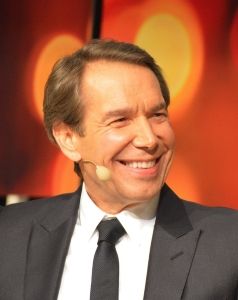
Neo-Geo is one of a number of competing terms applied to the works of Peter Halley, Ashley Bickerton, Jeff Koons, and Meyer Vaisman following their 1986 exhibition at the Sonnabend Gallery in New York City, although the artists were loosely associated rather than operating as a coherent movement. Without any formal declaration of aesthetic style, or critical consensus about its development, the story of Neo-Geo is best understood through the interaction of several of the key figures associated with it. The individual activities (and their relationship to each other) provides a narrative to the movement's development which can otherwise seem opaque.
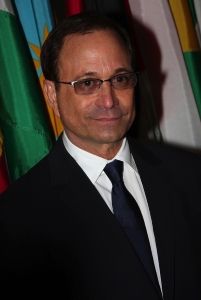
Jeff Koons and Ross Bleckner are two of the most important artists associated with the movement, and the confluences between their work provide a useful shape to its emergence. By the late 1970s Minimalism, which emphasized literal treatments and the pure materiality of the object, had undercut both the viability of painting and the connection of artworks to affect and broaden social and psychological concepts. In 1979 Bleckner's article, "Transcendent Anti-Fetishism" was his counter-reply to this environment, as he advocated for the painting as a "psychologized object" connecting to a "larger psychological, social, and political reality." The essay was an early influence on the artists that would make up the Neo-Geo movement. Bleckner's stripe paintings, referencing both Minimalist works like Frank Stella's stripe paintings and Op Art, were even more influential, playing a leading role in a revival of painting in the early 1980s. As they took previous art movements as referents that could be appropriated and fractured, they also became a model for conceptual work that repurposed art styles, almost as if aesthetic styles too were readymade objects able to be engaged with as such.
More influenced by Pop Art, and Andy Warhol in particular, Jeff Koons played a leading role in establishing the importance of sculpture to the emerging Neo-Geo movement. His work, like Warhol's, reflected, drew upon and implicitly critiqued consumer culture. His 1980 exhibition of The New (A Window Installation), for example, displayed three vacuum cleaners, encased in Plexiglas display cases and illuminated, along with a sign that read "The New," in the storefront window of the New Museum, as if a marketing campaign was being launched. The work brought him to critical attention alongside the group of the then well-established East Village artists, and his early works employing readymade consumer objects framed within geometric vitrine cases and aquarium tanks led to his being dubbed "the golden boy of Neo-Geo" by art critic Robin Peckham.
As the movement developed further around the work of Koons, Bleckner and others, the painter Peter Halley then emerged as not only a leading painter but the theorist of the Neo-Geo movement, publishing a number of articles in leading art journals in the 1980s that established the movement's theoretical foundation. Living in New York in 1980, the city informed his work as he described its "geometricization of space," and as he wrote in his biographical statement he "set out to connect the language of geometric abstraction to the actual space that he saw all around him, transforming the square - borrowed from Malevich, Albers, and others - into architectural icons he called 'prisons' and 'cells,' and connecting them by straight lines called 'conduits.'
Influenced by the French Post-Structuralist philosophers, including Michel Foucault, Roland Barthes, and Jean Baudrillard, he argued in "The Crisis in Geometry," published in Arts Magazine in 1984, that where "once geometry provided a sign of stability, order, and proportion, today it offers an array of shifting signifiers and images of confinement and deterrence. The formalist project in geometry is discredited. It no longer seems possible to explore form as form (in the shape of geometry), as it did to the Constructivists and Neo-Plasticists, nor to empty geometric form of its signifying function, as the Minimalists proposed." In the essay, he praised the works of Koons, Levine, and discussed his own work, and saw the philosopher Jean Baudrillard's concepts as those most related to the production of art in the 1980s.
The Importance of Jean Baudrillard
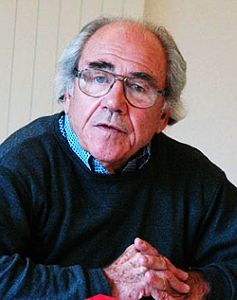
One of Halley's most important theoretical influences was the French philosopher Jean Baudrillard. Halley drew on the concepts of simulacra and simulation to frame the artistic production of the Neo-Geo artists, which were central to Baudrillard's philosophy and expressed in his Simulacra and Simulation (1981). The Simulacra is a concept that refers to copies or imitations that have no original but nonetheless constructed perceived reality. Examples of simulacra could be as simple as a brick, as a mass-produced object with no original, or as complex as Sleeping Beauty's Castle, having no original but reproduced at several Disney parks around the world.
As Baudrillard writes, "The simulacrum is never that which conceals the truth - it is the truth which conceals that there is none." In his work he defined three types of simulacra, each connected to a historical period, with the relevant version of the concept here corresponding to the postmodern and Late Capitalist era in which Halley and the other artists of Neo-Geo were working. Baudrillard suggested that when the distinction between reality and simulacra disappears, when "the real is confused with the model", originality becomes a meaningless concept. Both simulacra and simulation became the theoretical basis for Halley's ideas and of the Neo-Geo movement.
Baudrillard's concept of hyperreality, a state of modern consciousness distinguished by the inability to distinguish reality from simulation was similarly important. Halley adapted these views to the production of art, writing that the work could give "us an intensified experience of the simulacrum... not real but 'hyperreal'... totally pristine (divorced from the chance occurrences of reality)...presented serially (without original), where they inhabit a universe 'strangely similar to the original', where 'things are duplicated by their own scenario'." Halley preferred Baudrillard's term "simulationism," to describe the Neo-Geo movement, writing that, "Simulation, the fact of technical mediation replacing the natural thing, is such a big experience in our society. Air conditioning is a simulation of air; movies are a simulation of life; life is simulated by bio-mechanical manipulations.'' Halley's essays and usage of Baudrillard's theories played a notable role in creating the intellectual foundation for critical, curatorial, and public understanding and appreciation of the movement.
Theory Meets Institution
International With Monument Gallery - 1984
In the early 1980s, as the art market expanded to become a global phenomenon, small galleries began to open in the East Village, many of them owned and run by emerging artists, such as Gallery Nature Morte, which was opened by Philip Nagy in 1982. Drawing upon the model developed by Nature Morte, Meyer Vaisman co-founded, with the artists Elizabeth Koury and Kent Klamen, the International With Monument Gallery in 1984. The gallery, named after a sign they found in the building's basement, was meant to be a new venue for artists but also a statement aiming to counter the then-dominant style of Neo-Expressionism, with its emphasis on raw feeling and psychologically driven works. As Vaisman wrote, "during neo-expressionism's peak. What we showed could not be more different than what was shown in the rest of the world," and described the works shown as "very cold-looking work as opposed to the extremely messy expressionistic or graffiti-like art that was the staple...We were strangers, outlaws, and the E.V. establishment made us feel that way." In 1985 the gallery held Halley's first solo exhibition and Jeff Koons' Equilibrium, both breakthrough moments in the artists' careers and central to the increased recognition of Neo-Geo as an alternative direction. Art critic and curator Dan Cameron writes that "not only did Halley and Koons create exhibitions that carried a seismic critical wallop, but their work, packed into a tidy storefront, was also plainly visible to passersby, adding a touch of visual sensationalism for the uninitiated."
Sonnabend - 1986
As a result of International With Monument's success, a group of more established gallerists in Soho, including Mary Boone, Leo Castelli, and Illeana Sonnabend sought out Vaisman and the artists who showed at his gallery. As a result, Vaisman, Koons, Halley, and Bickerton subsequently signed contracts with Sonnabend gallery, leading to the gallery's 1986 exhibition of works by the "Hot Four", as art critic Paul Taylor in New York Magazine dubbed them. The show was also controversial, as art critic Kay Larson critiqued the show under the title of "Masters of Hype," suggesting the new movement was no more than a marketing ploy in the booming art market. As a result of the debate, it was "the most talked-about gallery show of the decade" as art curator and critic Dan Cameron noted. The careers of the artists involved took off however, and their works began to often be sold out even prior to the opening of major exhibits. Although there may be some irony in the incorporation of anti-consumerist critique into the booming art market of the 1980s, this in itself can also be read as a form of critique.
Following the exhibition, various names were suggested for the movement. The art critic Paul Taylor called it both "Neo-Conceptualism" and "Neo-Minimalism", curators Tricia Collins and Richard Milazzo proposed "Post-Conceptualism", and Eugene Schwartz dubbed it "Post-Abstract Abstraction" for an exhibition he subsequently curated. Peter Halley preferred to call it "Simulationism", though he also connected the style to his view of the "geometricisation of modern life." By 1987, the term Neo-Geo had begun to take hold, though still not without some debate, the tentative use of the term exemplified by the title of art critic Grace Glueck's New York Times article "What Do You Call Art's Newest Trend?: 'Neo-Geo'...Maybe". The movement used geometric form and appropriative strategies, drawing on the already existing aesthetics of abstraction. As art historian Hal Foster notes, this established an "ironic distance from its own tradition of abstract painting. In effect it treated this tradition as a store of readymades to appropriate, and in strategy if not in appearance neo-geo was closer to appropriation art than to abstract painting."
Part of the challenge of finding a name for the movement was due to the diversity of work produced by the artists associated with it, which at the time of Glueck's article included Ross Bleckner, Haim Steinbach, Sherrie Levine, Peter Schuyff, Peter Nagy, Allan McCollum, Julie Wachtel, Laurie Simmons, Gary Stephan, and Philip Taaffe. Glueck attempted to define the movement, writing that "One generalization that can be made about the new work is that it deals - as did some of the work in its predecessor movements, Pop and Conceptual - with images rather than primary sources. It is preoccupied with the barrage of reproductions... It also exhibits a concern with the threats - glamorous in their danger - posed by the technological advances of Western society. And its practitioners mean to address large social and esthetic questions, including the public acceptance of art as beautiful objects created for the elite. Meanwhile, their art has its own commodity status".
Concepts and Trends
Critique of Consumerism
A noted element of the Neo-Geo movement was its ironic commentary upon American consumerism, particularly as expressed in the readymades of Jeff Koons and Haim Steinbach. Rather than being explicit though, this was often framed in geometric formal devices, like Steinbach's triangular shelves or Koons' rectangular display cases, which further emphasized the geometric shapes and lines of the objects they contained. Ashley Bickerton similarly used commercial logos as if they were geometric forms, arranging them on plywood or signboards to create 'portraits' made up of a collection of brands, as seen in his Tormented Self- Portrait (Susie at Arles) (1987). Evoking Marcel Duchamp in a similar way, Meyer Vaisman repurposed four toilet lids in The Whole Public Thing (1986), stacked atop four canvases, all printed with his textile designs. The use of geometric framing reposited the consumer items within a distant and abstracted space, emphasizing their desirability but also subverting it, as they were displayed but deprived of functionality.
Photomechanical Reproduction
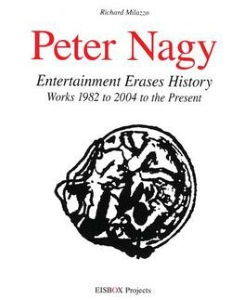
Meyer Vaisman and Peter Nagy were the artists of the movement who most notably employed photomechanical reproduction, with Nagy using Xeroxed drawings in particular. Theses were often symbols, maps, and other items, used in a way that suggested both the fragmentary ruins of history and contemporary logos. Vaisman used both photographs and mechanical reproductions of textile patterns, sometimes taken from commercial textile pattern books and other times of his own design, as seen in The Blank Portrait (1986) where three empty portrait cameos are placed on a textile printed canvas. Even when not using photomechanical reproduction, Neo-Geo artists would sometimes create works that aspired to the effect, as when Bickerton, in Abstract Painting for People #3 (1986), painted plumbing fixtures in acrylic and metal flake enamel on plywood to resemble cut-outs from a commercial plumbing fixture chart. The use of reproductions reflected the concept the image had replaced reality, in effect creating a world of signifiers disconnected from any signified meaning.
Art Appropriation
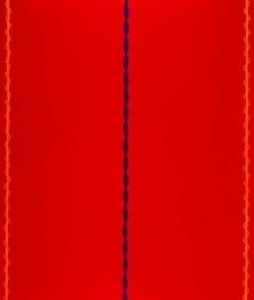
As Grace Glueck, one of the key documenters of the movement, notes "The painters among the Neo-Geo movement consciously recycled "geometric motifs of the 1960's and 70's in their canvases, but put them to new use, regarding their geometry as referential rather than abstract." In paintings with diverse approaches, Peter Halley, Ross Bleckner, Philip Taaffe, and Sherrie Levine ironically evoked the aesthetics of previous movements in service to their project. Halley appropriated Color Field and Hard-Edge Painting, for example, while Bleckner drew upon the Op Art of the 1960s. Levine's paintings drew upon analytic abstraction as well as generic abstract motifs. In this appropriation however they all shared a conceptual approach, reducing "abstraction to design, decoration, even kitsch", as Hal Foster noted. Bleckner, for example, suggests that Op Art was "quintessentially twentieth century: technologically oriented, disruptive, "about visual perception' naïve, superficial, and, by most accounts, a failure." He took an approach that "fractured" the style, as he put it, appropriating it within a conceptual framework that undercut its theoretical underpinnings.
Later Developments - After Neo-Geo
The movement came to an end by the early 1990s, in part due to its success, as the artists gained great critical acclaim and their work became much sought after. The key artists took diverging paths, both in art and in life, and the loose association that had always characterized it unraveled. Koons and Bickerton moved toward figurative work, while Bleckner became known for his cell paintings, using soft biomorphic shapes that evoked human cells and the devastating effects of the AIDS crisis. Halley's geometric cells and conduits became more complex, referencing the structure and technologies of the digital world. Many of the artists also geographically dispersed, as Nagy moved to India in 1992 where he has become a leading curator of Indian art, and Bickerton moved to Bali in 1993. Vaisman moved to Barcelona in 2000 where he turned to abstraction, and, a few years later, Schuyff moved permanently to the Netherlands, where he also developed a musical career.
Though brief, the movement had a noted and lasting impact on contemporary art, perhaps best exemplified by the high profile of Jeff Koons. In a 2018 interview, featuring the reunion of the Neo-Geo artists, art critic M.H. Miller wrote, "their influence...is wide-ranging and, as contemporary art becomes increasingly co-opted by the ever-ballooning market surrounding it, is felt even more today than perhaps it was at the time." Receiving critical attention with contemporary exhibitions, Vaisman, Bleckner, and Halley continue to influence subsequent artists, while Steinbach's work informs the artistic practices of Rachel Harrison, Darren Bader, Josephine Meckseper, Gareth James, Adam McEdwen, and Ricci Albenda. Levine's work has also influenced Bader, as well as Alex Da Corte.
Useful Resources on Neo-Geo
-
![Jeff Koons mini-documentary]() 155k viewsJeff Koons mini-documentaryMOCA
155k viewsJeff Koons mini-documentaryMOCA -
![Ashley Bickerton l Walls and Paintings]() 1k viewsAshley Bickerton l Walls and PaintingsDirimart
1k viewsAshley Bickerton l Walls and PaintingsDirimart -
![Ross Bleckner: Remember Me]() 6k viewsRoss Bleckner: Remember MeCheckerboard Film Foundation
6k viewsRoss Bleckner: Remember MeCheckerboard Film Foundation
-
![Peter Halley public talk at Garage Museum, Moscow]() 1k viewsPeter Halley public talk at Garage Museum, MoscowGary Tatintsian Gallery
1k viewsPeter Halley public talk at Garage Museum, MoscowGary Tatintsian Gallery -
![Artist Talk: Peter Halley and Max Hollein]() 3k viewsArtist Talk: Peter Halley and Max HolleinSchirn Kunsthalle Frankfurt
3k viewsArtist Talk: Peter Halley and Max HolleinSchirn Kunsthalle Frankfurt -
![Ross Bleckner]() 13k viewsRoss Bleckner
13k viewsRoss Bleckner - Jeff Koons: American ImaginationJeff Koons in conversation with Michael Eisner / Aspen Ideas Festival
- 75 Reasons to Live: Stephanie Syjuco on Sherrie Levine's La Fortune (After Man Ray)
 Ask The Art Story AI
Ask The Art Story AI